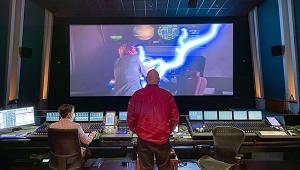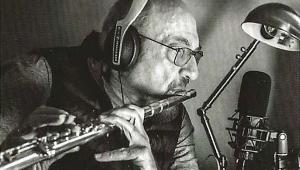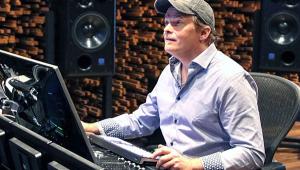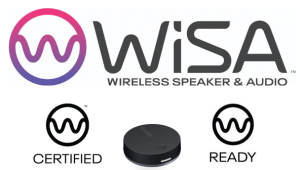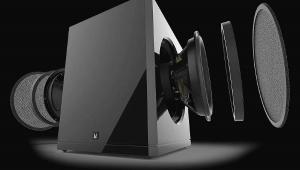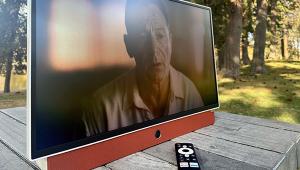Yet another fluff piece on an overpriced, under performing Apple product.
Make Room for HomePod
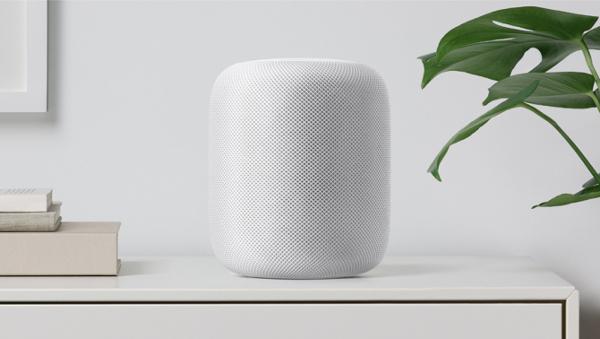
When Amazon introduced Echo in November 2014 we didn’t know quite what to make of it. A voice-controlled speaker from Amazon? Of course, with its new Alexa voice service on board it was more than just a speaker — it was, as Amazon put it, a “new category of device.” That category, which has come to be known as smart speakers, has exploded, attracting the likes of Google, Sonos, Harman (now owned by Samsung), and most recently Apple. While Amazon is still the undisputed king of the category it invented — owning 70-plus percent of the market and offering a full line of products — will it be able to hold onto that lead as competition heats up? When Apple announced in June its intention to deliver the HomePod by the end of the year, we were intrigued if not a bit puzzled over what took them so long to enter a market headed for billions of dollars in sales. To learn more about the HomePod, which begins shipping February 9 at the premium price of $350, we reached out to Phil Schiller, Apple’s senior vice president of worldwide marketing.
![]() S&V: Why HomePod? Why now?
S&V: Why HomePod? Why now?
Phil Schiller: We have an incredible team of audio engineers and scientists that are creating innovative new audio products — from the quad-speaker audio system in iPad Pro, to the magical AirPods — I think we have the knowledge and technology to deliver something special in the home. We’ve also been building Apple Music into a great service and bringing more intelligence to Siri to help you discover new music based on your tastes and preferences. All of this work comes together in HomePod so we can deliver an amazing music experience in your home.
HomePod is the result of recent advances in some pretty cool technology. We’ve applied machine learning so that HomePod can sense the environment it's in and sound great wherever it’s placed. We use our A8 chip to run advanced software on the device for real-time acoustic modeling, audio beam-forming, echo cancellation, and more. And while speaker arrays have been around for some time, we’ve advanced the thinking of what you can do with them to create a wide soundstage. We’ve also advanced Siri, making it faster and more reliable, and capable of listening for triggers like "Hey Siri" from afar even while loud music is playing.
S&V: Let’s step back and look at the big picture for a moment. Gartner predicts 75 percent of U.S. households will have at least one smart speaker by 2020. What’s Apple’s take on the category? Where do you see it going?
Schiller: No one knows exactly what the future will bring but as [personal computing pioneer] Alan Kay famously said, “The best way to predict the future is to invent it.” We think we can create a new kind of music experience in the home that sounds incredible, and is fun to interact with. That’s what’s driving us with HomePod. And it can also be the hub for your smart home. Voice technologies like Siri are also gaining in popularity with Siri responding to over 2 billion requests each week. This helps us understand how people actually interact with their devices, what they ask, and helps us create a product for the home that makes sense. We don’t think it’s just about HomePod though, or any one product, it’s about creating an experience that moves with you throughout the day — so the experience you have at home, is replicated in the car with CarPlay, at work with iPad and Mac, and when you’re out for a run with Watch and iPhone. You can listen to the same music, control your home accessories or ask Siri to do something for you, wherever you are.
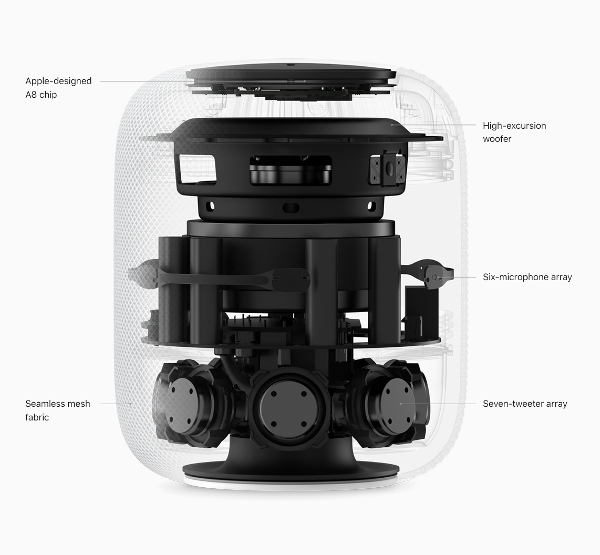
S&V: At the June launch event you opened with the statement that HomePod is going to reinvent music in our homes. How? More specifically, how is HomePod different than smart speakers from Amazon, Google, and others?
Schiller: When we set out to design HomePod, we knew we wanted to create a great music experience in the home. An intelligent speaker that is easy to set up and use, automatically adapts to its environment, and sounds amazing wherever you place it [a feature Apple calls spatial awareness.] We also want you to enjoy music throughout the house, so HomePod will support AirPlay 2 and multiroom audio, and with Apple Music and the ecosystem of all the other Apple products you use, we’re reinventing music in the home. And with advancements in Siri, and deep knowledge of your music preferences and tastes, HomePod understands what you want to listen to, when all you say is, "Hey Siri, play some music."
S&V: Let's look at the technology: How do you achieve “spatial awareness” and how does the speaker create a soundstage from such a small footprint (5.6 inches in diameter)?
Schiller: We wanted to make a speaker that sounds great no matter where you put it in your home. From the moment you plug in HomePod and start listening to music, it automatically and instantly senses its location in the room to take full advantage of the environment it’s in. The microphone array in HomePod listens to the reflection of the music off neighboring surfaces, senses where the bookshelf is, or if it’s in the corner of a room or against a wall, and then uses machine learning to understand what it’s hearing, interpret the sound, and adjust the audio. Using advanced software and the A8 chip, HomePod intelligently beams center vocals and direct energy away from the wall while reflecting the ambient reverb and back-up vocals against the wall for dispersion into the room. The end result is a wide soundstage with a feeling of spaciousness and depth. This entire process takes just seconds and it doesn’t stop with the initial setup. Every time you move HomePod, it uses the built-in accelerometer to detect a change in its location and continues to make sure the music sounds great and is consistent, wherever it’s placed. We’ve also done some great things to help minimize the audible side effects of compression artifacts by developing studio level dynamic processing to optimize for rich, clean bass even at loud volumes.
- Log in or register to post comments


How do you know if you haven't heard it? It isn't out until February 9th. Maybe save judgment until you actually demo it.

Non-starter. Plus it looks like a roll o toilet paper.

Stereo pairing is imminent and has been show in many demos to many people in the last few weeks.

Heh. Just what was said about Mac's, iPods, iPhones, iPads and on and on.

Play something from my iTunes library.
I’m a fan, and support Apple with my dollars in some significant ways. HomePod is a complete nonstarter for me, because I’m not an Apple Music subscriber, and because I know how to work my home’s light switches.
Bonus points for Schiller not answering the questions asked in a concise way.

It works great with Airplay - you don't need Apple Music to use it.

The endpoint can’t request songs. HomePod’s Siri can’t make use of just anything in your iTunes Library. It knows if you’ve purchased the music from Apple, and then stream it without an Apple Music subscription. But your ripped CDs? Nope.
(It’s likely possible for a Siri-equipped Mac to send music to HomePod, but that’s no different than it sending music to any AirPlay endpoint.)
I’m not one of those people who thinks a $350 AirPlay speaker is necessarily overpriced. But that’s not the point of this product. The multiple microphones and CPU are no doubt also used for the DSP room correction. Frankly, that seems like a bigger deal to me than being able to use my voice to change the music loudness.
But what do I know? I’m just an old audiophile with a growing library of hi res and other lossless files stored in iTunes, that Apple knows zero about … and does not want to know about.
We’re a long way from Rip. Mix. Burn. https://www.youtube.com/watch?v=4ECN4ZE9-Mo

You are incorrect on all counts.
Airplay 2, which is imminent can pul music form the cloud just like Spotify connect.
The home pod will play Flac and other high res files from iTunes.
Both of these are quite easy to find out if people bother to look into the details rather than say what they want to believe.

sure you can count?
Please show proof HomePod will be able to play non-purchased songs from my iTunes Library. That's all I was talking about.
Why did you mention pulling music from iCloud as "proof" of whatever? What does that have to do with being able to play non-purchased songs from my iTunes Library?
What does FLAC have to do with any of this?
So if you have more "details" that are oh-so-easy to find, do please share. As in, with a URL that proves not only whatever you're trying to say, but that's also on-topic with what I mentioned.
Thanks!

Obviously you don't need Apple Music to use it and your light switches are irrelevant because it means you don't want any smart speaker. Millions of people do.

He is in marketing and how is that different from any marketing person of any other product.

Can't wait until my Homepods come in - I ordered two. Apple rarely disappoints

Mine are on order too and will replaces my Sonos Ones which are buggy and have poor sound quality.

Good luck trading an aptX device for SBC.

What are you referring to? None of the products we are talking about use either AptX or SBC. Not HomePod and not Sonos.
HomePod uses Airplay superior to any form of Bluetooth. Apple devices that do use bluetooth use SBC and AAC and AAC is the same quality as AptX. Which is why Bose and other support AAC bluetooth.

Also Apple maintains privacy unlike the rest of them that sell your data to advertisers.

Sonos supports aptX. AptX supports up to 24-bit/96 kHz audio. Airplay is limited to 16-bit/44.1 kHz. AAC is the worst of all, no better than mp3. Airplay uses Wi-Fi and therefore has a longer range provided you have a stellar coonection and wireless coverage.

couple of things for you to ponder ...
- There's no such thing as an aptX file. That means any file transmitted via aptX must go through a lossy transcode. If you began with a lossless song file the hurt is minimal, i.e. one lossy transcode. If you began with a lossy file such as AAC or MP3 or an Ogg stream, aptX represents a second lossy transcode (compared to an original lossless one.)
- compare that scenario with a typical iPhone holding or streaming typical AAC files (either locally or via Apple Music). The AAC file transmits unfettered to a Bluetooth product that has AAC. No second transcode. The only similar situation for the Android user would be if they stored lossless files on their phone or streamed Tidal. Neither are likely, for most users.
- companies that support ACC over Bluetooth know how to write software, because AAC is open source. The only way to get aptX is to buy a chip from Qualcomm. And that's apparently easier to do than to hire a programmer to handle AAC.
- AirPlay and aptX are not directly comparable to each other. One's a LOSSY codec not used outside of Bluetooth, and the other's a 16/44.1 lossless transmission protocol.
- aptX is alway LOSSY. It doesn't matter if it handles "a 24/96" file, it's still a LOSSY codec. There's nothing about a pristine 24/96 file that would not, could not get butchered by running through aptX or any other lossy codec.
- sorry, but many listeners think AAC sounds at least as good as MP3. AAC is newer and benefits from a more modern algorithm.

Last month i kept music pad in my room and whenever i feel frustration, i start listening to soft music. It calm my brain and gives good feeling to me. At this time i am playing Gacha Nox by listening music.

HomePod is the result of recent advances in some pretty cool technology. It cover less space then older ones. You must checkout Popcorn Game

